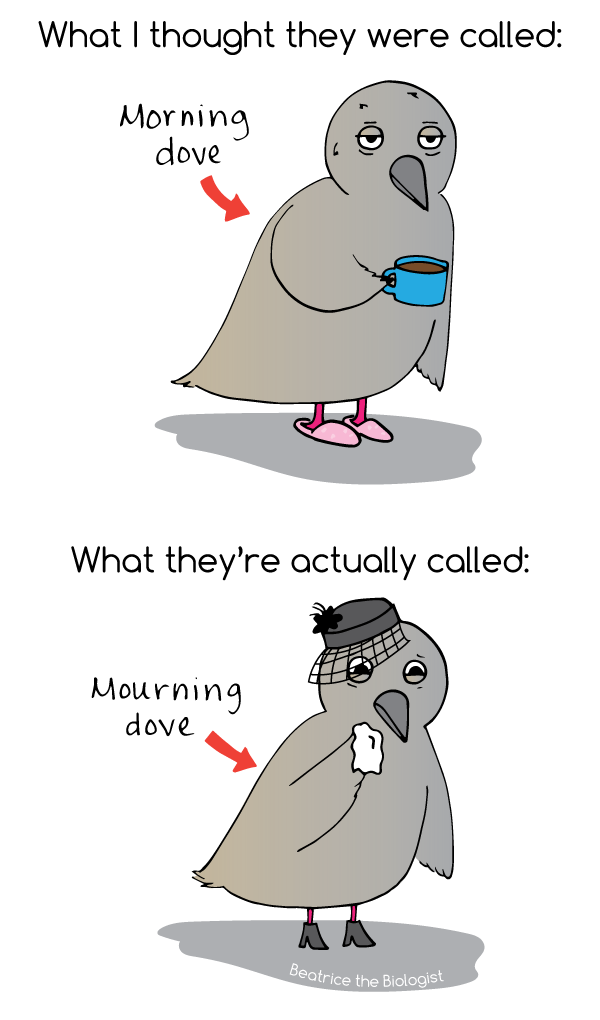This article was published in Scientific American’s former blog network and reflects the views of the author, not necessarily those of Scientific American
I just realized that I’ve been calling these birds the wrong name. That is, I’m thinking of the wrong word when I say it. Homophones can be tricky like that. My world was similarly shaken in my teenage years when I first saw “all intents and purposes” written out and realized that I’d been saying “all intensive purposes.” For shame.

I suppose I always thought it was a “morning” dove because I only seem to notice their coos in the a.m. hours. And until recently, I had never read about these doves, and so never had a chance to correct myself.
On supporting science journalism
If you're enjoying this article, consider supporting our award-winning journalism by subscribing. By purchasing a subscription you are helping to ensure the future of impactful stories about the discoveries and ideas shaping our world today.
But now that I do know that it’s mourning dove (and because you might already have known that -- you, smarty pants, you), let’s learn something more substantive about these common North American birds.
They are found throughout the United States and Mexico, and are one of the most abundant (and frequently hunted) birds. The U.S. population is around 350 million. They can drink salty water, about half as salty as seawater, and not get dehydrated. Impressive.
When the birds pair up to mate, they team up to build a nest, with the male bringing the materials and the female doing the building. When she lays typically two eggs, they take turns incubating them for the two-week incubation period. And once the babies hatch, the parents also take turns feeding them. Mourning doves -- just like pigeons, flamingoes, and some penguins – feed their babies crop milk (also called pigeon milk.) It’s a secretion produced by a pouch in the throat.
The oldest known mourning dove was over 30 years old when he was shot by a hunter. (He had a band around his leg with his birth year on it.) Who knows how long he might have lived if he’d gone un-hunted.
Sources: